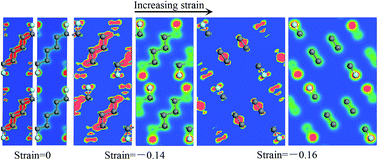Effect of compressive strain on the Hertzian contact of self-mated fluorinated carbon films
Abstract
Recent research on carbon films has introduced interesting low friction properties of self-mated fluorinated carbon films. In particular, the low friction mechanism of self-mated fluorinated carbon films was consistently attributed to anti-bonding repulsive forces. However, no experimental data reported to date for the limitations of this low friction mechanism comply with the results obtained using first-principles calculations. In this investigation, we attempt to clarify the limitations of the low friction mechanism of self-mated fluorinated carbon films.


 Please wait while we load your content...
Please wait while we load your content...